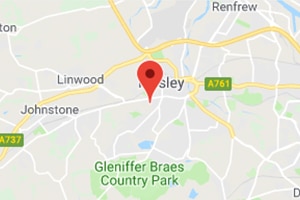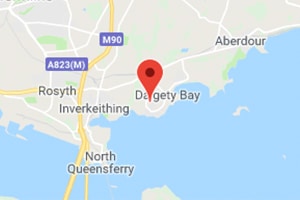The building industry is subject to a variety of rules and regulations. Amongst them are boiler flue regulations. These are designed to ensure that boiler flues are safely installed and positioned. By ensuring every property adheres to the regulations, the risk of subsequent harm and boiler-related illnesses is dramatically reduced.

What is a Boiler Flue?
When a boiler is functioning, it produces waste gases that need to be eliminated from the system. The flue is essentially the pipe that transports these gases out of the boiler.
As the gases can be potentially harmful, it’s important that the flue is situated in such a way that the waste gases do not re-enter the property. Similarly, the placement of a boiler flue should ensure that waste gases are not directed towards neighbouring properties.
Most people have seen a boiler flue at one time or another, although you may not have noticed what it is. Any property that has a boiler must also have a flue, so they’re extremely common in the UK. Typically, boiler flues are relatively short and jut out of an external wall. The sizing of a flue prevents the waste gases from being pumped back into the property but also prevents them from causing harm to anyone who might be nearby.
Skills Training Group are the UK’s leading provider of gas safe courses. Learn more about becoming a gas engineer today.
What are Boiler Flue Regulations?
Boiler flue regulations are just one type of building regulation. There are many others which determine how buildings can be constructed or modified safely and legally. As the waste gases expelled by boilers can be very harmful, boiler flue position regulations regarding boiler flues are necessarily strict. Anyone who contravenes them can face serious sanctions. Furthermore, failing to adhere to boiler flue regulations could result in tragic consequences.
Does Every Boiler Have a Flue?
Regular, combi and system boilers are all fitted with flues. In fact, the only type of boiler which doesn’t have a flue is a back boiler, which used to be situated behind fireplaces. However, back boilers are increasingly rare these days and most homeowners choose to have them updated. This means that, in reality, every boiler in the UK is fitted with a flue.

Most flues are fitted horizontally, although it may be appropriate for flues to be placed vertically on some properties. If the boiler is not fitted to an external wall, for example, a vertical may be used to channel waste gases through and out of the roof space. If your boiler flue was fitted within the last 15 years, it will have a round opening through which waste gases are expelled. Older styles are typically fitted with a square end.
Download your free information pack
Find out how you could train as a domestic gas engineer by downloading a free copy of our information pack.
Where Should a Boiler Flue be Situated?
The ideal placement of a boiler flue depends on a number of factors. According to the boiler flue regulations, regard should be given to the following issues when determining the appropriate placement:
Distance from windows and doors
A boiler flue should not be placed close to any part of your home that can open, such as windows or doors. These boiler flue distance regulations help to ensure that harmful gases are fully expelled from your property. The exact distance will depend on the size of your home but, generally, the regulations prevent a boiler flue from being situated within 30-60cm of a window or door. This is to prevent harmful gases from exiting the flue and then re-entering the property through an open door or window.
Temperature
When a boiler is operative, it is burning fuel in order to create heat. This means that the gases produced can be extremely hot. Due to this, the flue should not be placed too close to anything that hot gases could damage. If you have plastic guttering affixed to your property, for example, you should not place the flue nearby as hot gases could melt the guttering.
Vertical flues

Horizontal flues are used in most properties but, from time-to-time, it may be appropriate for vertical flues to be installed. If so, property owners often choose to have the flue encased. Boarding over a flue or concealing it can be more aesthetically pleasing, which is why this is a popular option. However, you will need to ensure that access points are left available if your flue is concealed in any way.
Does Your Boiler Meet the Regulations?
If you’re concerned that your boiler does not meet the boiler flue regulations, you may need to take action. Although some boiler flue regulations only apply to new installations, there are instances in which you’ll need to modify your setup to ensure it’s safe.
However, it’s vital that you don’t undertake these modifications alone. There are strict rules regarding who can work with boilers and flues, so you’ll need to ensure a suitably qualified and certified tradesperson carries out the work.
If you’re renovating or redecorating your home, you may want to move your boiler. Many homes have boilers situated in the kitchen, for example, and the trend for open-plan dining spaces means that many homeowners are keen to move their boiler to somewhere less conspicuous.
Providing you hire qualified personnel to move your boiler, it’s perfectly acceptable to do this as part of an interior design project. You may want to use boiler flue extension regulations if you’re expanding your property, for example. However, you will need to ensure that the new placement meets the boiler flue regulations, even if the old installation didn’t.
Installing a New Boiler
Under the regulations, all new boilers installed since 2005 in the UK must be condensing boilers. This means that homeowners will be forced to purchase a condensing boiler when replacing or upgrading their current boilers. Although some people were unhappy about this change, the increased energy-efficiency and safety associated with condensing boilers typically makes them a good choice for domestic use.

If you have an older boiler, there’s no need to panic. Providing it meets the appropriate regulations, such as the gas boiler flue regulations, there may be no need for you to make immediate changes.
Before you begin searching for a new boiler, however, it’s important to take newer regulations into account too. The Boiler Plus Regulations state that all new boilers in England must have an ERP rating of at least 92%. In practice, this means homeowners in England will need to install a condensing boiler that has an A or B SEDBUK rating. The only exception to this is if a Gas Safe Register installer determines that it is not viable to install a boiler with an A or B SEDBUK rating, in which case a boiler with a C or D rating may be installed.
If you’re considering purchasing a new boiler or you’re renovating your home and want to move the boiler placement, it’s always advisable to talk to a qualified and reputable engineer. They will be able to help you determine where the ideal placement for your boiler is and inform you of any regulations you need to adhere to. Additionally, a competent engineer can help you select a cost-effective boiler that will meet your needs.
Upon completion of the installation, you should be given appropriate documentation to confirm that the installation was carried out by a Gas Safe Register engineer. This enables you to prove that the work was undertaken by a tradesperson who was appropriately qualified and certified, should you ever need to do so.
What Do the Boiler Flue Regulations Mean for You?
As you may have noticed, there are numerous regulations which apply to the placement and installation of boilers and flues. Confusingly, these regulations are not all included in the same document. Instead, new regulations have been introduced over time. For homeowners, this means it can be tricky to identify all of the regulations which apply to their property and determine which are the most current.
Although the regulations regarding boiler flues can seem overbearing, there are created with safety in mind. The gases expelled from boilers typically contain carbon monoxide, which is a threat to life. While the regulations are strict, they do prevent people becoming unwell or being harmed because of exposure to these waste gases. In doing so, they make homes across the UK safer and prevent numerous tragedies each year.
If you’re struggling to understand the boiler flue regulations or you’re unsure whether you need to make changes to your existing setup, don’t hesitate to seek professional advice. With help from a Gas Safe Register engineer, you can ensure that your home is safe and up to date with the relevant boiler flue regulations.
Skills Training Group are an award-winning provider of adult gas apprenticeship courses. If you would like further information on how to become a gas engineer, click here.
Download your free information pack
Find out how you could train as a domestic gas engineer by downloading a free copy of our information pack.

